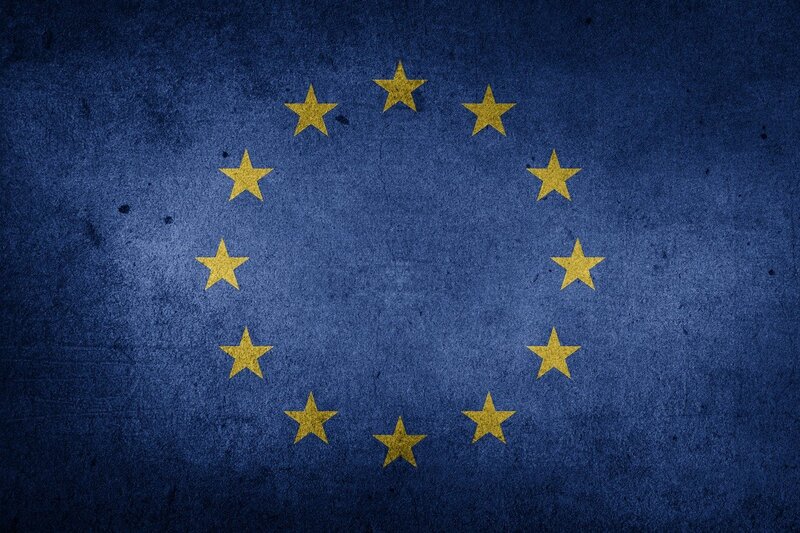European Union Countries
The European Union, or EU, is an amalgamation of European countries formed to benefit the movement of people, goods, investments and services between the member states. To this end, the EU can be viewed as one large jurisdiction within which the participating countries use a single (internal) market. This union allows for the easier and faster movement of goods and people than was (and would be) the case if all the participating countries operated their own rules and regulations regarding cross-border commerce, commuting and movement of goods.
The United Kingdom was a member of the European Union from 1973 until the end of January 2020, when Brexit (Britain’s Exit) came into effect and ended Britain’s forty-seven-year membership. This reduced the EU membership to twenty-seven countries:
- Austria
- Bulgaria
- Cyprus
- Czech Republic (Czechia)
- Denmark
- Germany
- Hungary
- Greece
- Republic of Ireland
- The Netherlands
- Italy
- Latvia
- Luxembourg
- Lithuania
- Malta
- Portugal
- Slovakia
- Spain
- Slovenia
- Sweden
- Croatia
- Estonia
- Belgium
- France
- Poland
- Finland
- Romania
EU Candidates
Joining the European Union is a lengthy process and involves the applicant country satisfying a number of legal, civic and commercial conditions. Presently, several European countries are in the process of applying for membership:
- Albania
- North Macedonia
- Bosnia and Herzegovina
- Moldova
- Serbia
- Turkey
- Montenegro
- Ukraine
Two further countries, Georgia and Kosovo, are also potential candidates for membership in the European Union, but both are some years away from satisfying even the basic requirements.
Member Factfile
Austria
Capital City: Vienna
Language: German
Joined EU: 1995
Currency: Euro
Population: 9 million
Schengen Member: Since 1997
Belgium
Capital City: Brussels
Language: Dutch, German, French
Joined EU: 1958
Currency: Euro
Population: 11.7 million
Schengen Member: Since 1995
Bulgaria
Capital City: Sofia
Language: Bulgarian
Joined EU: 2007
Currency: Bulgarian lev (Euro to be introduced)
Population: 6.9 million
Schengen Member: Applied for
Croatia
Capital City: Zagreb
Language: Croatian
Joined EU: 2013
Currency: Euro
Population: 3.9 million
Schengen Member: Since 2023
Cyprus
Capital City: Nicosia
Language: Greek
Joined EU: 2004
Currency: Euro
Population: 1 million
Schengen Member: In the process of joining
Czech Republic (Czechia)
Capital City: Prague
Language: Czech
Joined EU: 2004
Currency: Czech koruna (Euro to be introduced)
Population: 10.5 million
Schengen Member: Since 2007
Denmark
Capital City: Copenhagen
Language: Danish
Joined EU: 1973
Currency: Danish krone (opted out of the euro)
Population: 5.8 million
Schengen Member: Since 2001
Estonia
Capital City: Tallinn
Language: Estonian
Joined EU: 2004
Currency: Euro
Population: 1.3 million
Schengen Member: Since 2007
Finland
Capital City: Helsinki
Language: Finnish, Swedish
Joined EU: 1995
Currency: Euro
Population: 5.6 million
Schengen Member: Since 2001
France
Capital City: Paris
Language: French
Joined EU: 1958
Currency: Euro
Population: 68 million
Schengen Member: Since 1995
Germany
Capital City: Berlin
Language: German
Joined EU: 1958
Currency: Euro
Population: 83 million
Schengen Member: Since 1995
Greece
Capital City: Athens
Language: Greek
Joined EU: 1981
Currency: Euro
Population: 10.6 million
Schengen Member: Since 2000
Hungary
Capital City: Budapest
Language: Hungarian
Joined EU: 2004
Currency: Hungarian Forint (Euro to be introduced)
Population: 10 million
Schengen Member: Since 2007
Republic of Ireland
Capital City: Dublin
Language: English, Irish
Joined EU: 1973
Currency: Euro
Population: 5 million
Schengen Member: Opted out of Schengen
Italy
Capital City: Rome
Language: Italian
Joined EU: 1958
Currency: Euro
Population: 59 million
Schengen Member: Since 1997
Latvia
Capital City: Riga
Language: Latvian
Joined EU: 2004
Currency: Euro
Population: 1.9 million
Schengen Member: Since 2007
Lithuania
Capital City: Vilnius
Language: Lithuanian
Joined EU: 2004
Currency: Euro
Population: 2.8 million
Schengen Member: Since 2007
Luxembourg
Capital City: Luxembourg
Language: French, German
Joined EU: 1958
Currency: Euro
Population: 645,000
Schengen Member: Since 1995
Malta
Capital City: Valletta
Language: Maltese, English
Joined EU: 2004
Currency: Euro
Population: 525,000
Schengen Member: Since 2007
The Netherlands
Capital City: Amsterdam
Language: Dutch
Joined EU: 1958
Currency: Euro
Population: 17.6 million
Schengen Member: Since 1995
Poland
Capital City: Warsaw
Language: Polish
Joined EU: 2004
Currency: Polish zloty (Euro to be introduced)
Population: 37.7 million
Schengen Member: Since 2007
Portugal
Capital City: Lisbon
Language: Portuguese
Joined EU: 1986
Currency: Euro
Population: 10.4 million
Schengen Member: Since 1995
Romania
Capital City: Bucharest
Language: Romanian
Joined EU: 2007
Currency: Romanian leu (committed to introducing the euro)
Population: 19 million
Schengen Member: Application in process
Slovakia
Capital City: Bratislava
Language: Slovak
Joined EU: 2004
Currency: Euro
Population: 5.5 million
Schengen Member: 2007
Slovenia
Capital City: Ljubljana
Language: Slovenian
Joined EU: 2004
Currency: Euro
Population: 2.1 million
Schengen Member: Since 2007
Spain
Capital City: Madrid
Language: Spanish
Joined EU: 1986
Currency: Euro
Population: 47.5 million
Schengen Member: Since 1995
Sweden
Capital City: Stockholm
Language: Swedish
Joined EU: 1995
Currency: Swedish krona (committed to the introduction of the euro)
Population: 10.5 million
Schengen Member: Since 2001
Each of the 27 member states must contribute its fair share to the EU budget, and how big or small the contribution depends on the country’s economy and how well it is (or is not) performing. The budget contribution is not calculated on a country’s size or population but on how wealthy the country is deemed to be in relation to other member states. Every country has its own particular circumstances, which can change rapidly and affect the amount it must pay into (or receive from) the budget funds.
European Economic Area
Although the EU officially comprises 27 countries, the benefit of a single market with neighbouring countries, or those in close proximity, is a tremendous financial attraction. Europe also operates what is termed the European Economic Area (EEA), which incorporates the European Free Trade Association (EFTA).
The EFTA comprises just three member states Norway, Liechtenstein and Iceland. For various reasons, these three countries refused to join the EU or were refused permission to do so. In order to streamline commerce and promote trade across the greater European arena, the Commission of the European Union decided to group the EU and EFTA under the single banner of the European Economic Area.
This area encompasses all of the 27 EU member states and the three EFTA countries: Liechtenstein, Norway and Iceland. Another country to benefit from EEA inclusion is Switzerland, which is neither a member of the EU nor EFTA but is a special exception.
Ease of European Travel
Apart from the huge benefit the European Union common market has had on trade and commerce, there is also a notable benefit for most European citizens. Passport holders from any of the EU, EEA and Schengen member states now enjoy an ease of travel that was unheard of in years gone by.
In past decades foreign nationals entering a country were obliged to surrender a passport which was checked at each border crossing and stamped on entry and exit. In some cases, a visa was required to visit countries such as Poland. Acquiring a visa was often a difficult process, and delays at passport controls could be frustratingly long.
Nowadays, a European passport is generally only checked before one enters the European zone and on departure. The same applies to passports from a number of countries that have a visa-exempt agreement with the European Union. Listed visa-exempt countries include the United States, Canada, China, Australia, New Zealand and the United Kingdom. These exemptions may be set to expire as Europe brings in an electronic form of visa.
Schengen Visa or ETIAS
Foreign nationals wishing to visit Europe who does not qualify for visa-exempt entry will require, in all likelihood, a Schengen Visa for the destination country. The type of visa required will depend on the main purpose of the visit, but the application process is fairly standard. It entails filling out a detailed application form, supplying any documentation requested and attending a personal interview at the relevant embassy.
From 2023 Europe is starting to implement its ETIAS programme. ETIAS stands for European Travel Information and Authorisation System, and this pretty much describes its purpose. Applicants must supply personal and other information via an online application process. The information is then checked through a central ETIAS database before travel is authorised or not.
The introduction of ETIAS will not impact holders of passports from EU or Schengen Area member states but will affect all others. Even countries which currently enjoy visa-exempt travel to Europe will, in the near future, be required to have applied for and received ETIAS approval (which is digitally linked to the passport) before embarking on any visit to the European arena.




